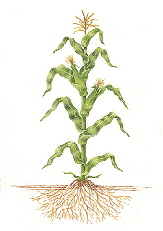Zea E-Books
Date of this Version
2017
Abstract
- Write your corrections directly on the proof pages. (Making changes back in your original manuscript file, for example, is not helpful because that stage has gone by.)
- Write in a bright color of ink that will be easily distinguishable from black type. Red is great; so is green.
- Form your letters and punctuation marks neatly to help ensure your corrections will be accurately read and correctly made. If you know you have a “hasty hand,” try pretending that you are about eight years old and writing each letter for a grade in penmanship class, or even that you’re teaching alphabet letter formation to a child. That can help!
- Use only the ample blank margins for writing your corrections. Avoid trying to squeeze handwriting between the narrow lines of type.
- Within the lines of type, make just two marks:
1) a caret (^) where you need something inserted (and then write those words or punctuation out in the margin, in line with the line of text where they go)
2) a single line through one letter or punctuation mark (vertical) or through a whole word or multiple words (horizontal)
- If you need to make several separate corrections within one line, use the caret or strikethrough line as needed within the line. Out in the margin, simply place your corrections in order and separate them from each other with a slash mark.
- Write corrections and additions in the uppercase and lowercase letters that should actually appear in the text. Avoid using all capital letters, for example, unless the correction or addition should indeed be set in all capital letters.
- If you need some text to be deleted, draw the single horizontal line through it, and to confirm no text will replace it, simply put a delete mark out in the margin, like so:
- To show that a space needs to be added, insert a caret within the text to indicate where it goes. Out in the margin, write a space sign, like so: #
- To show that a correction needs to ride above the text baseline—such as for a superscripted footnote number, apostrophe, or quotation mark—write the number or mark in the margin and place an inverted caret (a V shape) beneath and up around it.
- If you need to make a major change that involves several sentences or a paragraph, please type the new text in its entirety on a separate sheet. Attach it to the appropriate proof page with a paperclip. Indicate on the proof page where the typed correction belongs. Indicate on that separate sheet the page number in the proofs where it belongs, just in case it should become unclipped from that page.
- If you make an error and don’t, after all, want the text changed the way that you inked it, just write stet in the margin and put a row of small dots under the affected text.
- Finally, remember to proofread much more slowly than your normal reading speed in order to detect and fix the highest percentage of errors!


